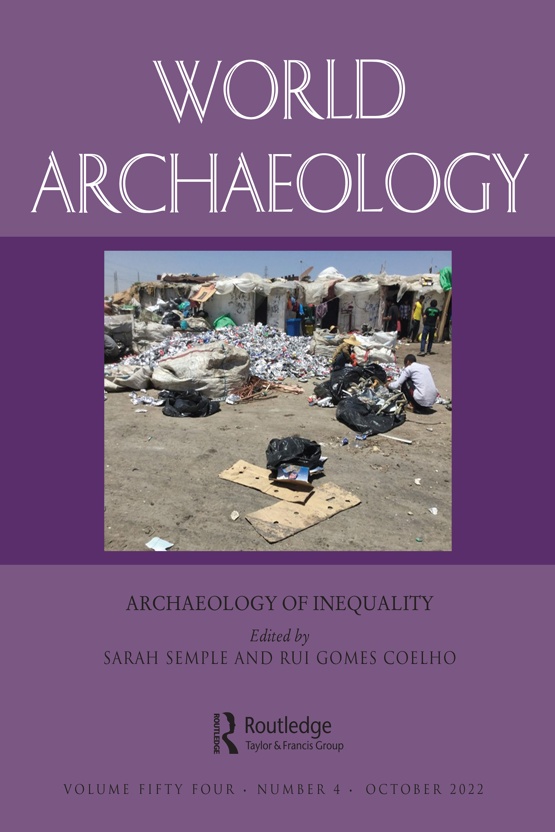Submit a Manuscript to the Journal
World Archaeology
For a Special Issue on
Revolutionising Rock Art
Manuscript deadline
13 August 2024

Special Issue Editor(s)
Paul Pettitt,
Department of Archaeology, Durham University
[email protected]
Joana Valdez-Tullett,
University of Southampton
Sofia Figueiredo Persson CHAM,
Centre for the Humanities NOVA University Lisbon
Sven Ouzman,
University of Western Australia
Revolutionising Rock Art
Rock art is one of the most visually striking and theoretically informed artefacts of the global archaeological record. Since the nineteenth century it has been recognised by antiquarians and archaeologists as a widespread, ancient and sometimes ongoing practice. But the difficulty in excavating and dating rock art have typically disconnected it from other types of archaeological evidence such as stratigraphies, chronologies and materialities. This has led either to crepuscular description or speculation about its meanings, especially in parts of the world where it is no longer a living practice or ethnography.
Until the 1960s rock art research was in a descriptive phase, focused on motifs, using methodologies imported from art history, semiotics, and culture history, which had descriptive power but did little to elucidate its role in past societies. A Eurocentric emphasis on artefact-derived chronologies for the Palaeolithic and later ‘prehistoric’ periods still limits the potential of rock art for informing about the wider aspects of past societies, raising competing issues of terminology, methodologies and theoretical background. The late twentieth century saw a turning point in rock art research, the first ‘rock art revolution’. New theoretical and methodological frameworks, grounded in landscape archaeology, anthropological and ethnographic data provided a better understanding of the social and cultural role of rock art. More recently, the widespread availability and application of digital recording technologies have revolutionised the field, offering unprecedented insights into rock art, its contexts and the gestures behind its production. These are accompanied by the development of laboratory sciences such as pigment analysis, dating and provenancing of very small pigment samples, widening the heuristic potential of rock art research. Informing and in some cases produced by these technical innovations, novel theories such as new materialism and the ontological turn have generated new avenues of research, and have intertwined the understanding of rock art with associated features such as landscapes, personhood, cognitive archaeology, relational ontologies and Indigenous knowledge.
Now is an ideal time to stimulate a second rock art revolution, by reconsidering old questions, recalibrating our use of scientific methods, and raising new possibilities of rock art’s material and performative aspects. Our volume responds, aiming for a global approach, inviting multidisciplinary approaches to a global phenomenon in its widest practical and theoretical context, and placing rock art alongside all other forms of archaeological evidence of social and cultural narratives.
Contributions are encouraged which cover all potential chronologies and geographies, and which challenge old perspectives and present new approaches. Papers are invited that explore the interplay between archaeology and ethnography in rock art studies, interrogate the role of digital technologies and what they bring to rock art studies beyond ‘pretty pictures’, consider the value of ‘multidisciplinarity’ and/or situate the significance of new rock art finds to well established traditions. Papers that consider the role of archaeological theory in rock art studies and rock art’s social and cultural place in the past and offer theoretically-informed approaches to conserving and managing rock art are also welcome, alongside those undertaking general surveys and specific analyses and contributions in areas where rock art research is making a strong emergence, such as in the Latin-speaking world and Global South.
Looking to Publish your Research?
Find out how to publish your research open access with Taylor & Francis Group.
Choose open accessSubmission Instructions
Please follow the instructions for authors available at the link below to prepare your paper before submission.